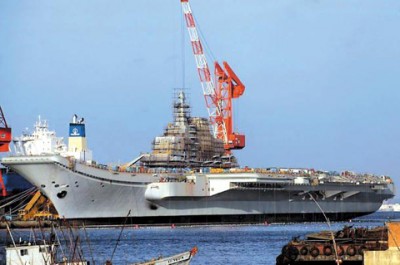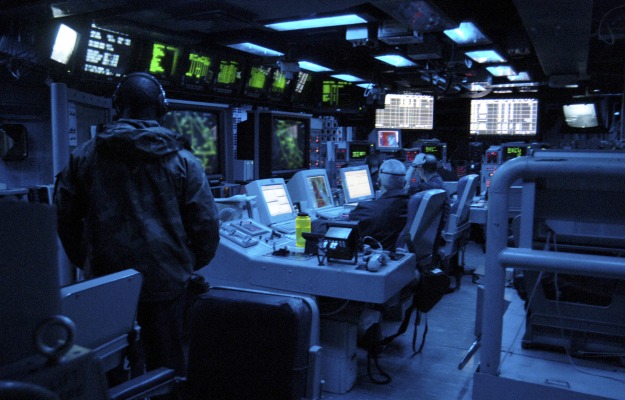
first aircraft carrier of the People’s Liberation Army Navy
Adm. Robert Willard, commander of U.S. Pacific Command, said in an April interview with Bloomberg that he is “not concerned” about China’s first carrier going to sea, but allowed: “Based on the feedback that we received from our partners and allies in the Pacific, I think the change in perception by the region will be significant.” Japan’s Asahi Shimbun quotes a military source as stating: “We can see that China is spending a huge amount of its military budget for the construction of aircraft carriers…. With its naval power, China is seriously trying to counter the United States. This stance could lead to small-scale clashes and friction with U.S. forces or the [Japanese] Self-Defense Forces.” Australian Brig. Gen. John Frewen contends, “The unintended consequences of Chinese carriers pose the greatest threat to regional harmony in the decades ahead.” The Hindustan Times, citing a senior Indian naval officer, emphasizes that China’s “first aircraft carrier … will be more advanced than anything India has or plans to get.”
There is much that the world still does not know about how China intends to use this emerging capability, so we should start with what we do know. The carrier Varyag was purchased from Ukraine in 1998 and brought to Dalian in 2002. In Dalian, the PLAN’s shipbuilders have filled in the “guts” that the original hull was missing, including engines, generators, and defense systems. At 65,000 tons, the ex-Varyag is smaller than the 100,000-ton American Nimitz-class carriers. Instead of the catapult used by American carriers to launch planes into the air, China’s new carrier features a “ski-jump” ramp to help aircraft take off.
These two data points generally indicate that China’s first aircraft carrier will not be nearly as capable as its American cousins. Varyag’s smaller size, and especially its ski-jump ramp, mean that it will not be able to deploy heavier planes that require the assistance of a catapult to take off. As heavier planes are required to collect information, coordinate operations, fly for long periods of time, or drop heavy ordnance, it seems that Varyag will primarily be used to extend the umbrella of Chinese air cover from its shores (as opposed to more general power projection, such as striking ground or naval targets, as conducted by American aircraft carriers).

Tiffany A. Aiken/U.S. Navy/Getty Images
In addition to its technical shortcomings, a single aircraft carrier is of very limited military utility. Even once testing is completed, the carrier will have to be in maintenance for several months out of the year. Additionally, China currently lacks the experienced naval aviators and sailors needed to operate a carrier successfully and safely.










































